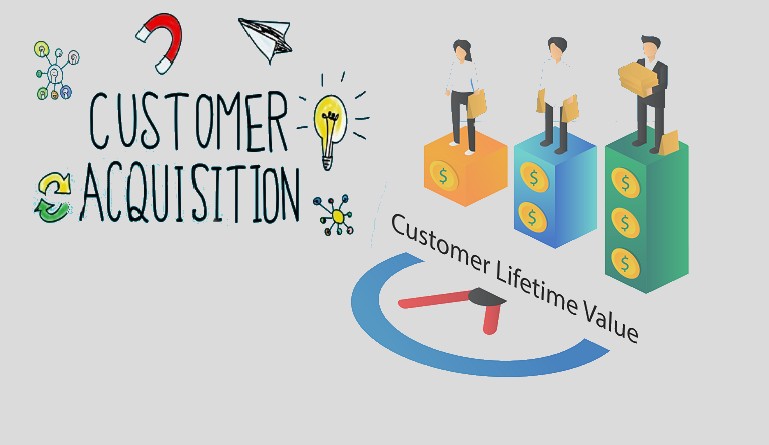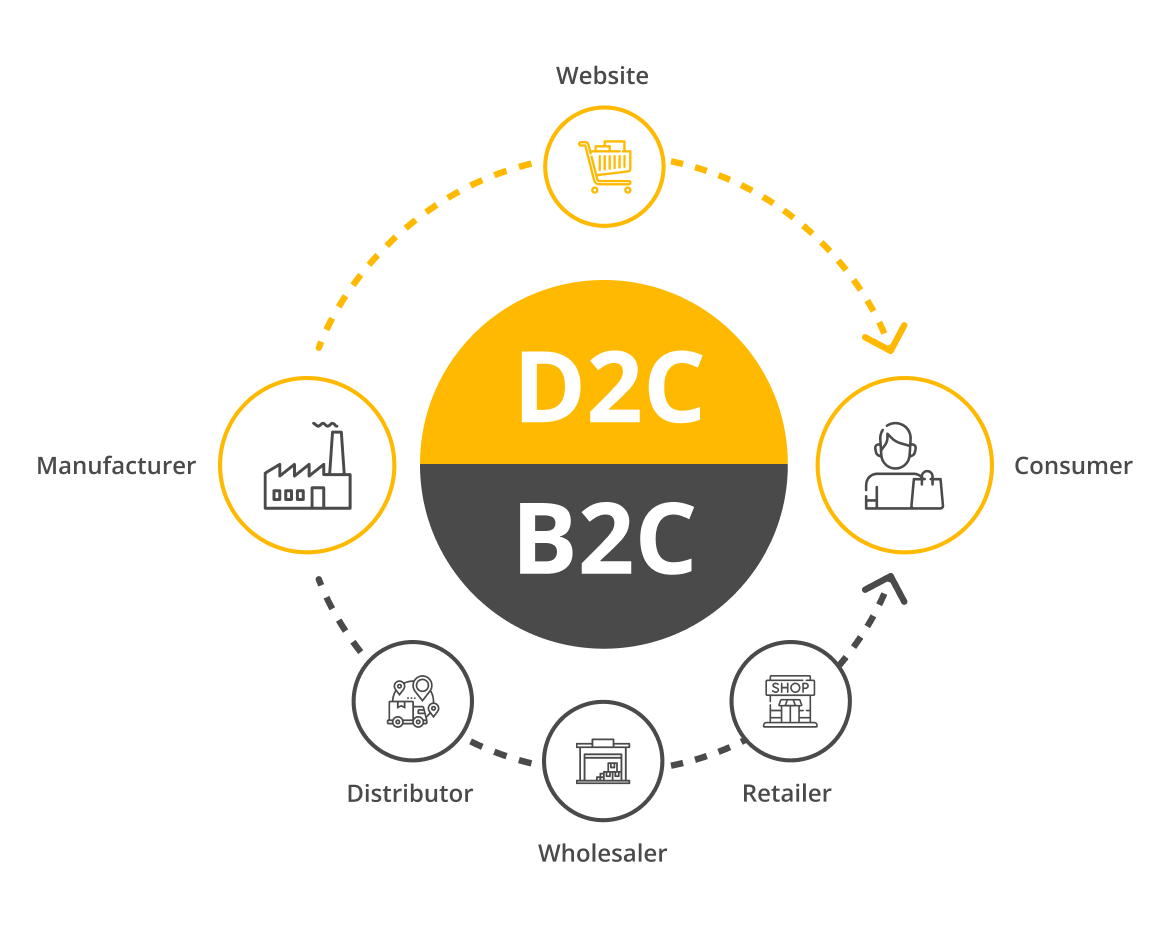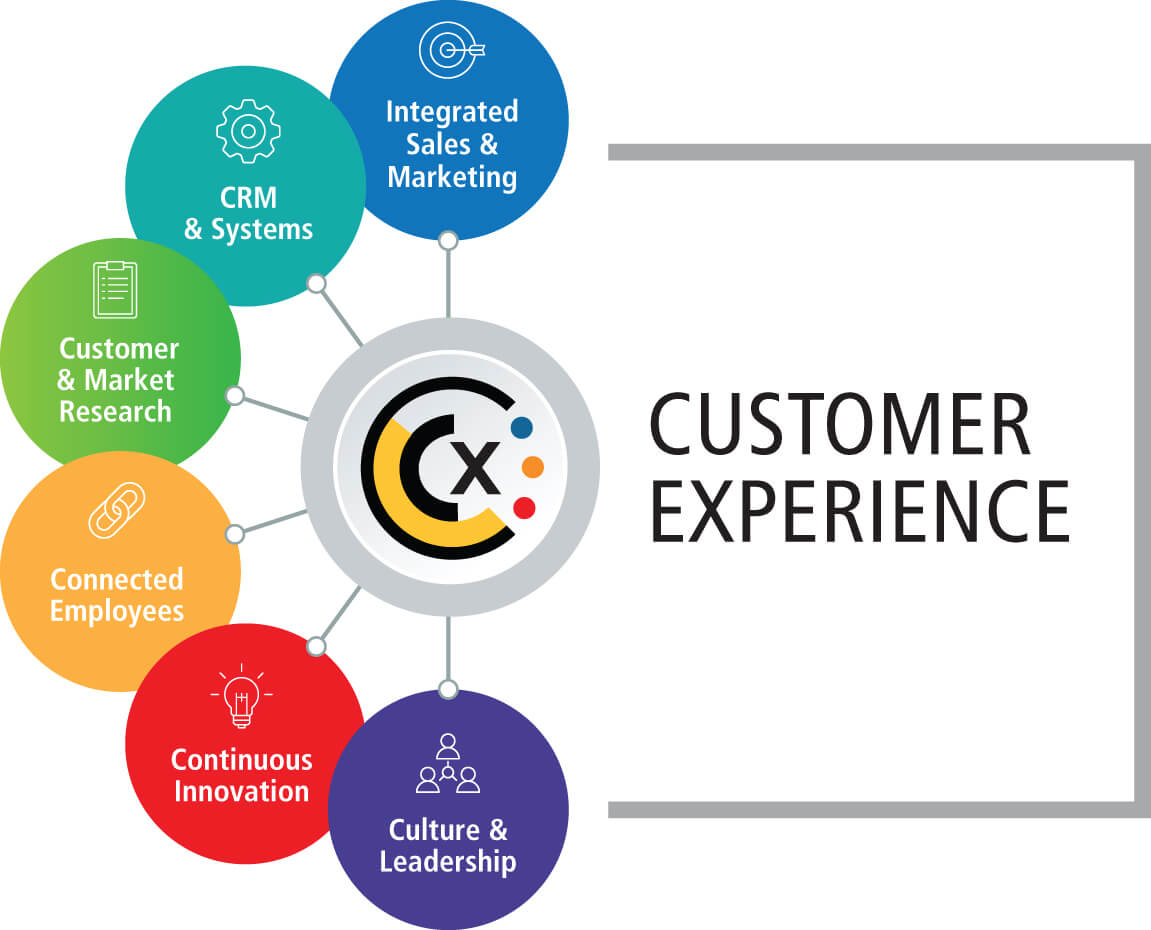In recent years, the Direct-to-Consumer (D2C) model has gained popularity as a way for startups to bypass traditional retail channels and sell products directly to customers. By cutting out intermediaries, businesses can build stronger customer relationships, gain greater control over their brand, and improve profit margins. However, implementing a D2C model comes with its own set of challenges and considerations. In this article, we’ll explore how to successfully implement a D2C model in your startup, from building a strong online presence to optimizing logistics and customer experience.
What is the D2C Model?
Definition of the D2C Model
A D2C model refers to businesses that sell their products directly to consumers, typically through an online platform, rather than relying on third-party retailers, wholesalers, or intermediaries. This allows startups to have direct access to customer data, control pricing, and create a more personalized shopping experience.

Why the D2C Model is Ideal for Startups
The D2C model offers several advantages for startups, including:
- Higher Profit Margins: By eliminating middlemen, businesses can retain more revenue.
- Direct Customer Relationships: Businesses can gather valuable customer feedback and data, which is critical for growth.
- Brand Control: Startups maintain full control over their brand’s messaging, pricing, and customer experience.
1. Building a Strong Online Presence
Why Your Website is the Foundation of Your D2C Model
For any D2C startup, the website is the primary sales channel. A strong online presence is crucial to attract and retain customers. Your website needs to be easy to navigate, visually appealing, and optimized for conversions.

How to Create an Effective D2C Website
- User-Friendly Design: Ensure that your website is intuitive, mobile-friendly, and offers seamless navigation.
- E-commerce Functionality: Use a reliable e-commerce platform like Shopify, WooCommerce, or BigCommerce to handle transactions, product listings, and customer accounts.
- Compelling Product Pages: Invest in high-quality product images, detailed descriptions, and customer reviews to build trust and drive sales.
2. Developing a Strong Brand Identity
The Role of Branding in D2C Success
In a crowded market, your brand identity plays a pivotal role in attracting and retaining customers. A unique and compelling brand differentiates you from competitors and helps build emotional connections with consumers.

How to Create a Strong Brand for Your D2C Startup
- Define Your Brand Values: Clearly articulate what your brand stands for and how it resonates with your target audience.
- Consistent Messaging: Ensure that your brand voice, design, and messaging are consistent across all channels, from your website to social media.
- Storytelling: Use storytelling to humanize your brand, sharing your startup’s mission, values, and journey to connect with customers on a deeper level.
3. Mastering Digital Marketing and Customer Acquisition
Why Digital Marketing is Crucial for D2C Startups
Without physical storefronts, D2C startups rely heavily on digital marketing to reach their target audience. A well-rounded digital marketing strategy helps drive traffic to your website, increase brand awareness, and convert visitors into loyal customers.

Key Digital Marketing Strategies for D2C
- Social Media Marketing: Use platforms like Instagram, Facebook, and TikTok to engage with your audience, showcase your products, and build a community around your brand.
- Search Engine Optimization (SEO): Optimize your website for search engines by using relevant keywords, optimizing page speed, and building backlinks to improve visibility.
- Email Marketing: Build an email list and create personalized email campaigns to nurture relationships and drive repeat purchases.
4. Managing Supply Chain and Fulfillment
The Challenges of D2C Logistics
A common challenge for D2C startups is managing the supply chain and fulfillment process. Since you’re responsible for delivering products directly to consumers, you need to ensure that logistics run smoothly, from inventory management to shipping.

How to Optimize D2C Fulfillment
- Choose Reliable Suppliers: Partner with trusted suppliers who can meet your demand without compromising on quality.
- Streamline Inventory Management: Use inventory management software to track stock levels, prevent overselling, and optimize replenishment.
- Offer Flexible Shipping Options: Provide a range of shipping options, including standard and expedited, to cater to different customer preferences.
5. Enhancing Customer Experience and Support
Why Customer Experience is the Heart of the D2C Model
In a D2C model, customer experience is critical. Since you’re cutting out intermediaries, it’s your responsibility to provide a seamless and enjoyable experience for your customers, from browsing your website to receiving their products.

How to Deliver a Stellar Customer Experience
- Personalization: Use customer data to personalize product recommendations, offers, and marketing messages.
- Clear Communication: Keep customers informed about their order status, delivery times, and return policies to build trust.
- Responsive Customer Support: Offer multiple channels for customer support, such as live chat, email, or social media, and ensure quick response times to resolve any issues.
6. Leveraging Customer Data for Growth
The Power of Customer Data in D2C
One of the biggest advantages of the D2C model is direct access to customer data. By leveraging this data, you can gain valuable insights into customer behavior, preferences, and buying patterns, allowing you to optimize your marketing efforts and product offerings.

How to Use Customer Data Effectively
- Analyze Customer Behavior: Use tools like Google Analytics or Shopify Analytics to track customer interactions, conversion rates, and purchasing trends.
- Segment Your Audience: Divide your customer base into segments based on demographics, purchase history, or preferences to deliver more targeted marketing messages.
- Optimize Retargeting: Use retargeting ads to bring back customers who have abandoned their shopping carts or haven’t purchased in a while.
Future Outlook and Emerging Trends in D2C
1. The Rise of Subscription-Based D2C Models
Subscription services are becoming increasingly popular in the D2C space, offering recurring revenue and building stronger customer loyalty. Startups can explore subscription models for products like beauty, food, and apparel to generate consistent sales.
2. Increased Focus on Sustainability
Consumers are becoming more conscious of the environmental impact of their purchases. D2C startups that prioritize sustainability—whether through eco-friendly packaging, ethical sourcing, or carbon-neutral shipping—can differentiate themselves and attract eco-conscious customers.
3. Omnichannel D2C Approaches
While D2C typically focuses on online sales, many startups are adopting an omnichannel approach, blending online and offline experiences. Pop-up shops, partnerships with physical retailers, or mobile experiences allow D2C brands to reach more customers.
Practical Tips for Implementing a D2C Model
1. Start Small and Scale Gradually
When implementing a D2C model, it’s wise to start small and scale gradually. Test your product offerings, marketing strategies, and fulfillment processes on a smaller scale before expanding to a larger audience.
2. Continuously Optimize Based on Feedback
Regularly gather customer feedback to identify areas for improvement. Whether it’s tweaking your website, enhancing product features, or improving customer service, use feedback to refine your D2C model.
Conclusion
Key Takeaways
Successfully implementing a D2C model requires a strong online presence, compelling brand identity, effective digital marketing, and seamless logistics. By prioritizing customer experience, leveraging data, and staying agile, startups can unlock the full potential of the D2C model and build long-term relationships with their customers. The future of retail is increasingly shifting towards direct sales, making now the perfect time for startups to embrace this approach.
Final Thoughts
The D2C model offers startups an incredible opportunity to connect directly with consumers, build brand loyalty, and control their entire sales process. By carefully planning and executing your strategy, you can set your startup up for success in the competitive digital landscape.
FAQs
What is the D2C model?
The D2C model allows businesses to sell directly to consumers, bypassing traditional intermediaries like wholesalers or retailers.
What are the advantages of the D2C model for startups?
Startups can benefit from higher profit margins, direct customer relationships, and complete control over branding and customer experience.
How can I create a strong D2C brand?
Focus on defining clear brand values, creating consistent messaging, and using storytelling to connect with your audience.
What challenges do D2C startups face?
Common challenges include managing logistics, optimizing digital marketing, and maintaining customer satisfaction without intermediaries.
How can customer data help D2C startups grow?
By analyzing customer data, D2C startups can personalize marketing efforts, optimize product offerings, and enhance customer experiences.








